LASER therapy :
Full form LASER Therapy :
Light Amplification by Stimulated Emission of Radiation – LASER
Introduction of LASER Therapy :
- Laser Therapy involves the application of low-intensity laser light to relieve pain caused due to the damage of soft tissue.
- It facilitates tissue repair and restores normal cell function.
- It is used by experts to heal wounds and pain.
- The level of light is quite low compared to other forms of Laser Therapy, such as those used to destroy tumors and coagulate tissues.
Properties of LASER Therapy :
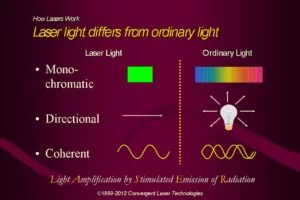
- Compressed light of a wavelength form the cold, red part of the spectrum of electromagnetic radiation.
- Monochromatic = single wavelength, single color.
- Coherent = travels in straight line.
- Polarized = concentrates its beam in a defined location / spot.
History of LASER Therapy :
- Albert Einstein = first describe this therapy that was transformed in to laser therapy.
- By the end of the 60’s Endre Master = was resorting on wound healing through laser therapy.
- In early 1960’s , the first low level laser was developed .
- In Feb . 2002 = the microlight 830 [ ML 830 ] received FDA approval for carpal tunnel syndrome treatment .
Class level of LASER by AEL :
- It is classified by the FDA’S center for devices & radio logical health based on the Accessible Emission Limit [ AEL ] .
- Incapable of producing damaging radiation levels .
- Power visible LASER [ 400-700 nm wavelength,1 nW ].
- Medium-power LASER [ need eye protection .
- High power LASER [ more than 500 nW ] [ Present fire hazard ] .
Classification of LASER :
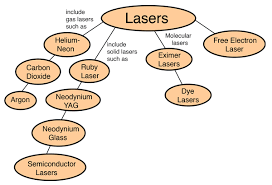
- According to nature of the material placed between two reflecting surface
- According to intensity
- According to hazards
According to nature of the material placed between two reflecting surface :
Crystal lasers [ solid-state lasers ]
- Ruby crystal [ aluminum oxide + chromium ]
- Neodymium crystal is embedded in yttrium – aluminium garnet [ Nd: YAG ] lasers
Gas laser :
- Helium neon
- Argon
- Carbon dioxide
Semiconductor or diode laser :
- Gallium arsenide [ GaAs ]
Liquid laser :
- Polypropylene
- Oxazine
Chemical laser :
- It is with high intensity not used therapeutically but used in industrial production .
According to intensity :
High power :
- It is known as hot lasers because of the thermal response they generate .
- There are used in the medical realms in numerous areas .
- Including surgical cutting and coagulation , ophthalmologist , dermatological and vascular specialties .
Low power :
- It is used for wound healing and pain management .
- There lasers produce a maximal output of less than a milliwatt causing photo chemical , rather than thermal effects .
- No tissue warming occurs .
According to hazards :
| CLASS – 1 | CLASS – 2 | CLASS – 3 | CLASS – 4 |
| Less than 0.5 mW | Less than 1 mW | 1 mW to 500 mW | More than 500 mW |
| Visible & non – visible | Visible | Visible & invisible | Visible |
| No eye or skin danger | Safe for shirt periods on eyes &extended on skin | Protective eye ware if direct viewing beam | Eye danger can result form indirect or reflected beam |
| Laser printer Car entry, CD player | Helium neon | Helium neon Galium Arsenide | Co2 , Argon , YAG laser |
| No heating / No healing | No heating / no healing | MPE can be exceeded with limited effects | Dehydrates tissue |
Types of LASER :
- High power LASER
- Low power LASER
High power LASER :
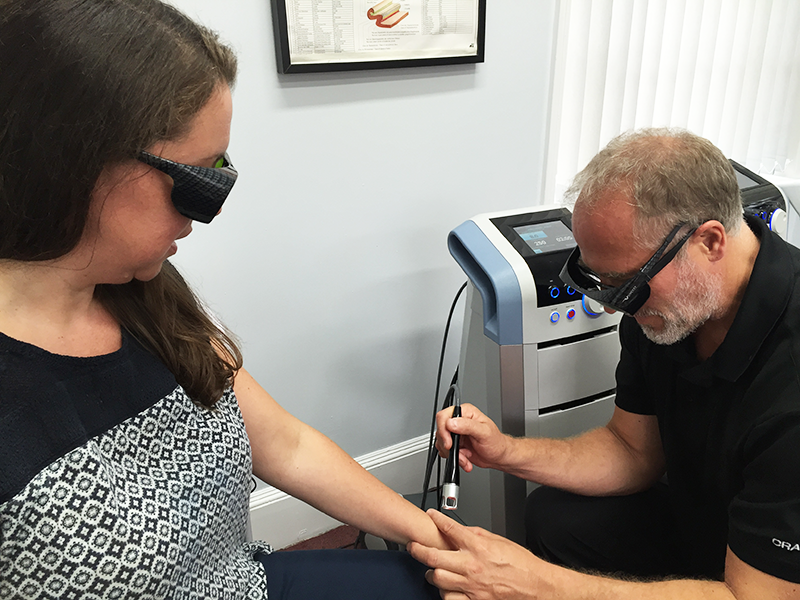
- It is also known as hot lasers because of the thermal response they generate.
- They are used in surgical cutting, coagulation conditions, destroy tumors and coagulate tissues.
Low power LASER

- It is also known as Cold LASER .
- Low power LASER act according to the Arndt-Schulz principle which states that if a stimulus is too weak, no effect is seen.
- Increased stimulation and optimal dose lead to the optimal effect, while further dose increase leads to a decreased effect and furthermore increase leads to inhibition of stimulation is also known as photobiomodulation .
- Used in wound healing and pain management.
- Low laser is a pain-free, non-invasive method.
| High lasers | Low lasers |
| Surgical lasers | Medical lasers |
| Hard lasers | Soft lasers |
| Thermal lasers | Sub thermal lasers |
| Energy (3000-10000 Mw) lasers | Energy 1-500 mW lasers |
| Therapeutic (hot ) lasers produce a maximum output of 500 mW or 0.5 Watts | Therapeutic (cold) lasers produce a maximum output of 90 mW or less |
| 1000 nm light | 600- 1000 nm light |
Production of Laser :
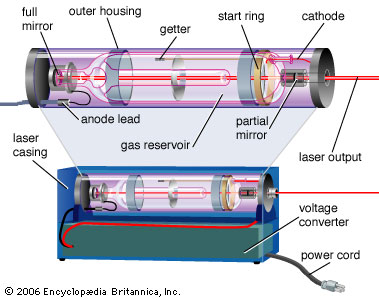
- Laser device is made up of an optical cavity or chamber that contains active medium for which laser is named.
- The chamber has mirrors on either end that are perfectly parallel to each other within a single wavelength of light.
- One of the mirror is partially open. Electricity or energy is added to the medium which excites it.
- The active mediums atoms are reflected back and forth across the mirrors within the chambers.this causes more excitation of atoms within the medium.
- Laser light is then emitted through the partially reflective end of mirror.
Production of light :
1.Electron is pumped to a higher energy level.
2.Pumping level is unstable so the electron quickly jumps to a slightly lower energy level.
3.Electron relaxes to a lower energy state and releases a photon.
4.Light and an electron in an excited energy level produces two photons of same wavelength and phase.
5.Mirror reflects the photons or laser light is emitted.
Components of LASER generator :
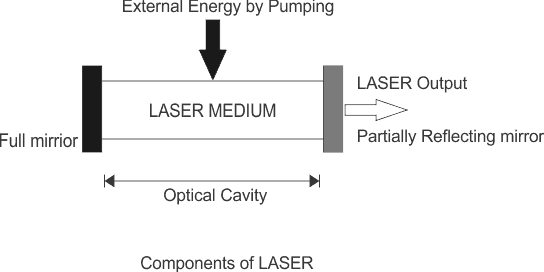
- Power supply = electrical power supply than can deliver up to 10000 volts & 100 amps
- Lasing medium = gas , solid , liquid
- Pumping device = high voltage , photo flash lamps
- Optical resonant cavity = contains lasing medium
How does LASER Work?
- When the light source is placed against the skin, the photons penetrates several centimetres and gets absorbed by the mitochondria.
- The energy fuels many positive physiological responses resulting in restoration of normal cell morphology and function but at enhanced rate.
- Targeted in hemoglobin and cytochrome oxidase, the high power diode laser could help in respiration and then in result have a good performance therapy .
EFFECTS OF LASER THERAPY :
- This procedure is generally safe, effective and non-invasive to use.
- Although you will feel the laser device touching your skin but the procedure is painless, no vibration or heat is felt.
- The non-thermal photons of light that are emitted from the Laser, pass through the skin layers.
- Once the light passes through the layers of the skin and reaches the target area.
- The body tissue then absorbs the light and initiates a series of events in the cell resulting in the healing of damaged or injured tissue .
- Reduction in pain and inflammation, and an overall reduction in healing time by increasing intracellular metabolism.
Most commonly used LASER :
- Helium-neon (He-Ne)
- Gallium arsenide (Ga-As)
Helium-neon (He-Ne) :

- In this laser, a mixture of helium gas and neon is used in a pressurized tube.
- This creates a laser in the red portion of the electromagnetic spectrum with a wavelength of 632.8nm.
- The power out-put of the HnNe can vary .
- But typically runs form 1.0 to 10.0 mW depending gas density used .
Gallium arsenide (Ga-As) :-
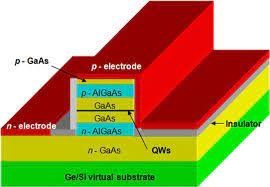
- It uses a diode to produce an infrared invisible laser at a wavelength of 904nm.
- Diode lasers are composed of semiconductor silicon that is cut and layered.
- An electrical source is applied to each side and lasing action is produced at the junction of the two surfaces.
- The surfaces function as partially reflecting surfaces that produce coherent light.
- This laser is given in pulsed form because of the heat produced by it.
- The 94 -nm laser is delivered in a pulsed mode because of the heat produced at the junction of the diode chips .
- Diode laser can single beam and multi source cluster beam .
Preparation of the patient for LASER Therapy :

- The skin to be treated is cleaned to lower the skin resistance.
- Gels sprays or water is applied to the skin to lower the resistance .
- Wearing of protective glass by therapist and patient .
- Working in well-lit room .
- Avoiding reflective surface with the beam .
- The skin in the area of electrode placement should be cleaned by saline water , shop or Vaseline to lower skin resistance .
- Electrodes should be fixed in position , using mending tapes to maintain good contact throughout treatment period.
Calculation of LASER Therapy doses :
It is dependent on :
- The output power of the laser in mw
- The time of exposure in second
- The beam surface area of the laser in cm2
- Energy or total energy [ joule ] = watt X seconds
- Time of exposure [ second ] = joule / watts
Depth of penetration :
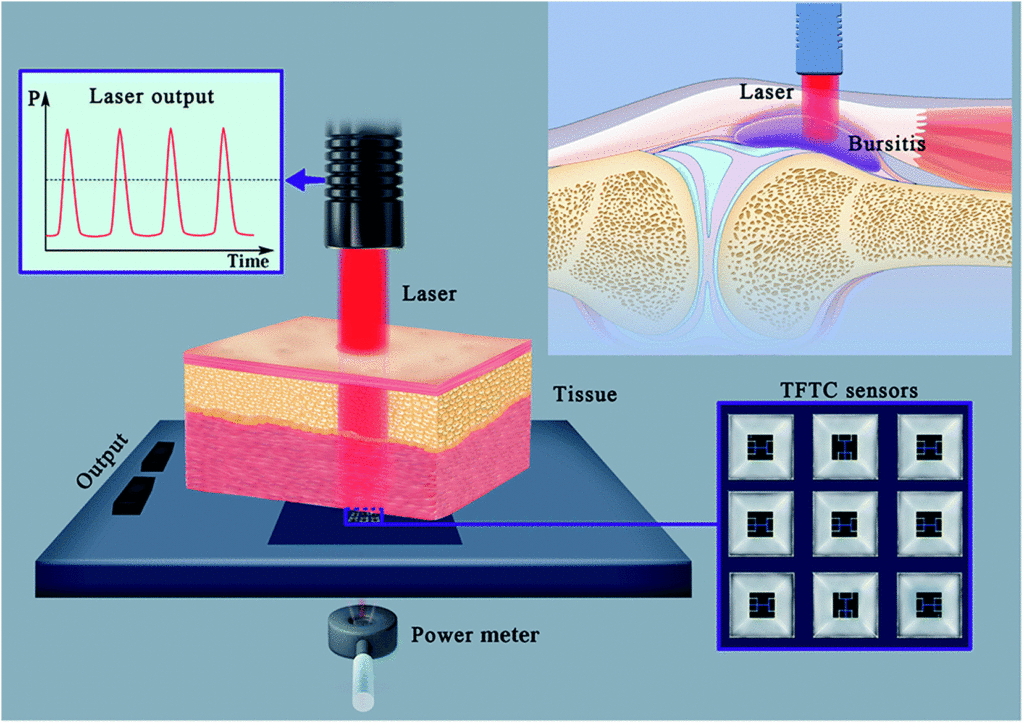
He-Ne laser energy :
- Absorbed rapidly in the superficial structures, especially within the first 2-mm of tissue.
- The He-Ne has an indirect effect on the tissues up to 8-10mm.
GaAs laser energy :
- Ga-As laser which has a longer wavelength is directly absorbed in tissues at depths of 1-2 cm and has an indirect effect up to 5 cm.
LASER Therapy treatment techniques :
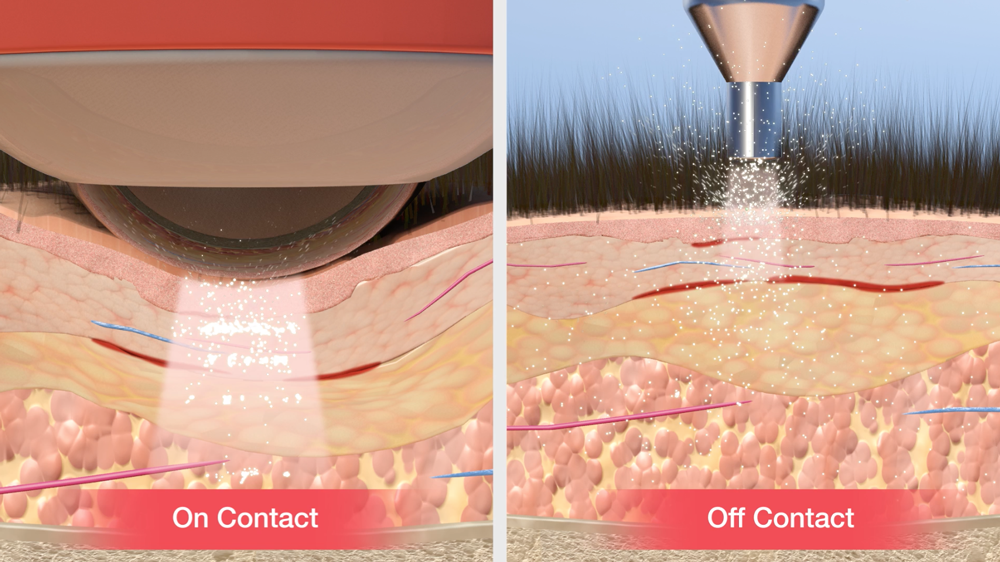
- Contact technique = GaAs only for trigger points or around wound.
- Non – contact technique = for superficial wound or stimulation of wound bed .
Difference between contact and non-contact technique of LASER :
| NO | TITLE | CONTACT | NON – CONTACT |
| 1 | Use | Pain relief | Open wound |
| 2 | Distance between laser probe and skin | 0 cm | 0.5 – 1 cm |
| 3 | Held of probe | Perpendicular to skin | Perpendicular to site of radiation |
| 4 | Penetration | Deeper | Superficial |
| 5 | Power density | Maximize | Minimize |
| 6 | Reflection | Minimize | Maximize |
| 7 | Diameter of head | 76 mm | 13 mm |
| 8 | Power | No wasted | Wasted |
Physiological effect of LASER Therapy :
- Reducing pain
- Reducing inflammation
- Promoting tissue healing
- Recovery form nerve injury
- Consequently as a result of these effects , laser of this type could have a valuable role to play in the treatment of painful soft tissue injuries .
- It is importance of accurate assessment and diagnosis to determine the area for laser application is vitally important .
Indication of LASER Therapy :
Orthopedic causes and sports causes :
- General Chronic
- Tennis elbow
- Plantar fasciitis
- Shoulder impingement
- Frozen shoulder
- Disc herniation
- Pelvic Dysfunction
- Osteoarthritis of the knee, hip, and ankle
- Rheumatoid arthritis
- Tendinitis
- Tennis Elbow
- Temporal mandibular Joint
Neurogenic causes :
- Diabetic Neuropathy
- Sciatica
- Trigeminal neuralgia
Dermatological causes :
- Hip or shoulder bursitis
- Wound
- Ulcer
Contraindications of LASER Therapy :
- Cancer = Do not use it over the cancerous part of the body.
- Epileptics = Do not use in epileptic patients.
- Cardiac patients = pacemaker
- Pregnancy = The laser rays should not reach the fetus.
- Skin infection

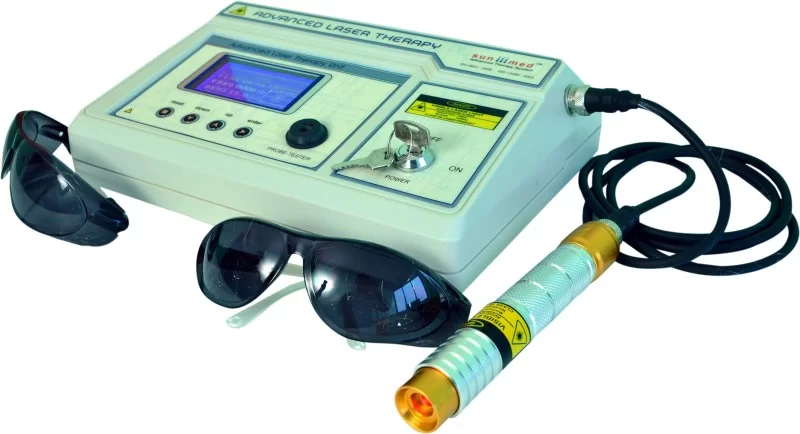
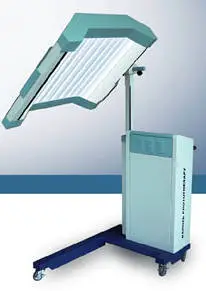
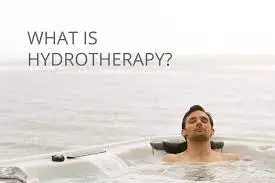
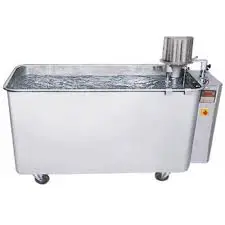
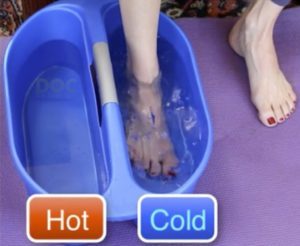
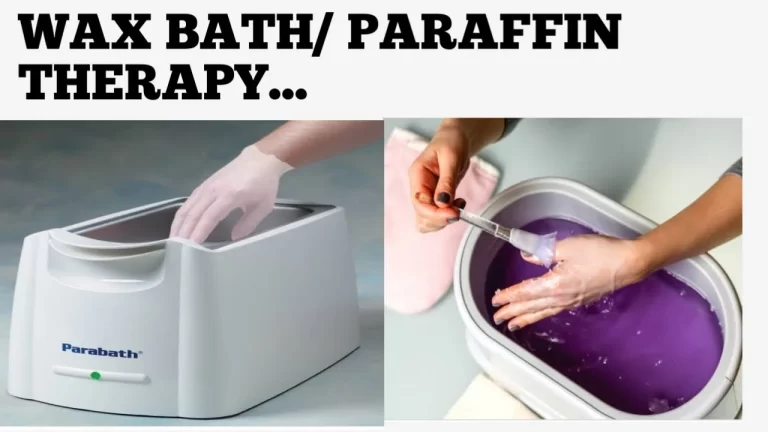
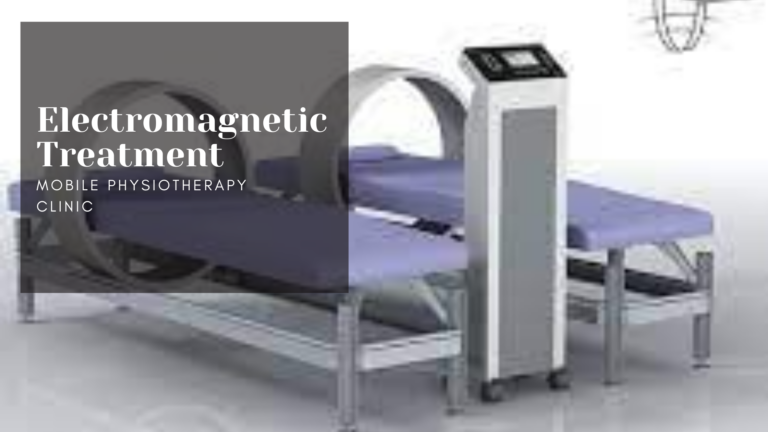
8 Comments